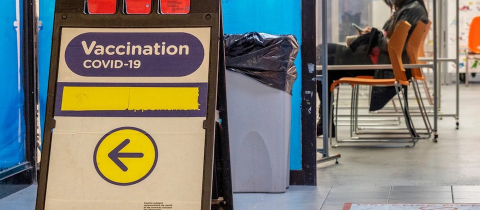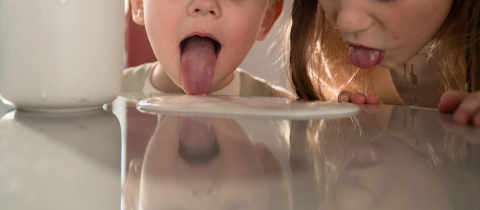A weekly explanation of the emerging science behind COVID-19 and its infectious agent, SARS-CoV-2.
Loss of smell and taste could be a symptom of COVID-19 but not a very specific one
The idea that some people with COVID-19 experience loss of smell and/or taste has been making the rounds in the media. The origin of this association seems to be a letter published by the president of ENT UK (the professional membership body of ear, nose and throat specialists in the United Kingdom) and the president of the British Rhinological Society. They mention evidence emanating from South Korea, China, Iran, Italy, Germany, France, and the United States, the only source mentioned in the letter being surgeons on medical discussion boards. This letter was followed by a brief statement on March 22nd by the American Academy of Otolaryngology-Head and Neck Surgery. The symptoms they list as being potentially associated with COVID-19 are medically known as “anosmia” (complete loss of smell), “hyposmia” (decreased sense of smell), and a word you have to look at twice to figure out how to pronounce: dysgeusia (persistent, unpleasant, abnormal, or altered taste sensation). For the record, it is pronounced “dis-GOO-zia.”
The evidence so far is anecdotal, with doctors on the ground reporting figures and quick surveys that have not been properly published yet. There does not appear to be any peer-reviewed correspondences on this possible association at the moment, although you may be forgiven for thinking there was. Statnews.com, a health-oriented website produced by Boston Globe Media, cited a Korean study on loss of smell and the coronavirus. The study, though, used data collected between 2006 and 2016 and makes no mention of coronaviruses. It is instead a look at how common loss of smell is in the South Korean population.
Anecdotes are not reliable data, but given the crisis we are in and the fact that healthcare professionals on the frontlines are reporting this association in large numbers, we cannot dismiss them. This loss of smell and taste, however, is not a specific symptom for COVID-19, meaning its cause could be something else, including something that similarly affects the airways. About a third of people with the flu, a cold or allergies report losing their sense of smell.
Still, given this accumulation of reputable anecdotes and the fact that patients who test positive for COVID-19 need to be isolated, the American Academy of Otolaryngology-Head and Neck Surgery is asking for these symptoms to be added to the list of screening tools for possible COVID-19.
The virus was not made or purposefully modified in a laboratory
Now that we have the full sequence of the SARS-CoV-2 genome (the blueprint that codes for the parts that make up the virus itself), we can compare it to other viruses. This is what scientists did in a recent correspondence to the journal Nature Medicine. The take-home message of this analysis is that there are too many pieces of evidence against the hypothesis that SARS-CoV-2 was created in a laboratory or that it was being cultured in cells and escaped confinement to infect humans. First off, imagine you were an evil scientist who tried to make a better version of the virus that gave us SARS in 2002-2003. That virus entered human cells by binding to a molecule called ACE2, just like the current SARS-CoV-2 virus. But the parts of the virus that interact with ACE2 in the SARS virus and the current virus are almost completely different, to the point where computers predict that SARS-CoV-2’s sequence will make for a weaker interaction with ACE2. It turns out that, in reality, the interaction is much stronger than what is predicted, but it would have been difficult for you, evil scientist, to know that in advance. It’s like you are recruiting a burglar and choose one who is predicted to be worse at picking locks. Moreover, a lab origin for SARS-CoV-2 would almost certainly contain the coronavirus backbone that is typically used for lab experiments, but this backbone is simply absent from SARS-CoV-2.
The authors also consider the possibility that a coronavirus mutated while being cultured in cells in the laboratory and escaped to cause havoc. But there too, the facts don’t add up. The portion of the virus that binds to ACE2 is identical to one found in a known pangolin coronavirus. It makes more sense for SARS-CoV-2 to have come from pangolins than to have spontaneously mutated in a lab such that it would exactly match a known animal virus at that region of the genome. Also, the authors remark that the presence of sugars bound to very specific bits of the proteins coded by the virus suggest the involvement of an immune system, meaning that this happened in a living organism and not in Petri dishes.
Comparing the SARS-CoV-2 genome to that of animal coronaviruses, the authors hypothesize that either a known animal coronavirus mutated and then infected humans or that the virus infected humans, though poorly, and then mutated in humans to become SARS-CoV-2. More studies are needed.
Vaccines are tested in humans in early clinical trials
There’s been a lot of talk about our ultimate salvation from COVID-19 in the form of a vaccine. I have been astonished to see the speed at which vaccine development on this new disease has been initiated. Already, two early-stage clinical trials have begun, one from China and one from the U.S., testing vaccines in healthy volunteers. In a traditional vaccine against a viral infection, the inactivated virus is given whole or in part to stimulate the immune system without causing the infection. But these COVID-19 vaccines are somewhat different.
The vaccines being tested do not deliver a part of the virus that will trigger the production of antibodies but rather the blueprint to make that part. Because the blueprint is fragile, it requires a vehicle. The Chinese team is using a “neutered” adenovirus, while the Americans are testing a tiny bubble of fat called a lipid nanoparticle. Once inside the body, the blueprint they contain will produce the SARS-CoV-2 spike protein, which will hopefully trigger the desired immune response.
These trials will look to see if the vaccines are safe, if they produce a reaction, and if the volunteers who receive them develop antibodies against the virus, which would protect them from COVID-19. Other pharmaceutical companies are getting the go-ahead to start human trials of their vaccine candidates, so we can expect further developments in the coming months.
It’s important to tamper the hype that will accompany these vaccines. They are being tested precisely because they could fail. We do not yet know if they will work or how well they will work. Moreover, these are phase 1 trials. They will be followed by phase 2, then by phase 3 trials. If a vaccine makes it through this obstacle course, it will require regulatory approval (which will be complicated by the fact that no vaccine of this type has ever been approved, meaning a vaccine that contains the genetic blueprint as opposed to the virus itself or one of its proteins or sugars). Then comes the large-scale manufacture and deployment.
We are more than a year away from an effective COVID-19 vaccine. The speed at which vaccine trials are getting approved though is meteoric. You might even say these trials are going viral.
Take-home message:
- Loss of smell and taste could be a symptom of COVID-19 but not a very specific one
- The virus that causes COVID-19 was not made or purposefully modified in a laboratory
- Vaccines to protect us from COVID-19 are being tested in humans in early clinical trials







